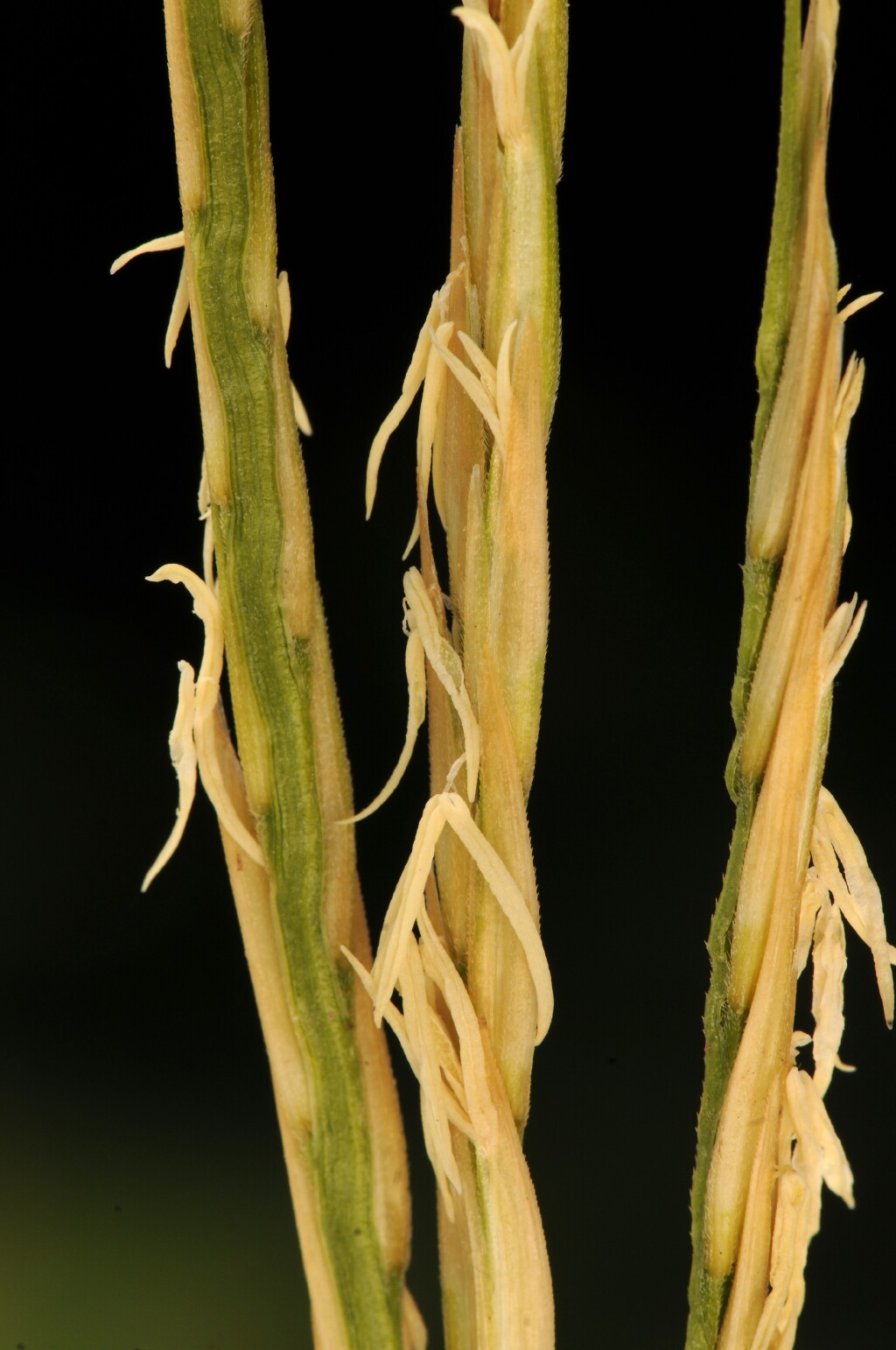Sporobolus ×townsendii
(H.Groves & J.Groves) P.M.Peterson & SaarelaDeep-rooted perennial, reproducing vegetatively only, initially forming clumps but later spreading to near pure swards, culms erect, 30–130 cm tall. Leaves smooth and glabrous; blade or folded tapered to a fine, hard point, to 30 cm long and 12 mm wide, forming an angle <45 degrees to culm; ligule 1–1.5 mm long. Inflorescence with 2–6 yellowish spikes, each 4–15 cm long and terminating in a bristle 1–4 cm long. Spikelets 12–18 mm long, lower glume about two-thirds as long as spikelet, upper as long as spikelet, both slightly scabrous along keel; lemma about midway between glumes in length; palea slightly shorter than upper glume; anthers 5–7(–8) mm long, containing sterile pollen only and usually indehiscent. Flowers Dec.–Mar.
GipP, WPro. Also naturalised in SA, Tas. Native to southern England, France and Denmark, but widely planted in saltmarsh elsewhere for land reclamation. Known in Victoria from only three localities (Westernport Bay near Tooradin, Corner Inlet near Foster and Andersons Inlet near Inverloch). Deliberately planted in the 1920s and 1930s in Corner Inlet for conversion of tidal mudflats to pasture.
The Corner Inlet population was initially identified as S. maritimus (Curt.) P.M.Peterson & Saarela (as Spartina maritima (Curt.) Fernald), one of the presumed parent species of S. ×townsendii (the other being S. alterniflora Loisel.). Spartina maritima differs from S. ×townsendii in its generally narrower leaves (to 6 mm wide), shorter ligule (to 0.6 mm), spikelets (11–15 mm) and anthers (4–6 mm), the latter being fertile. Sporobolus anglicus is an amphidiploid dervied from S. ×townsendii.
Walsh, N.G. (1994). Poaceae. In: Walsh, N.G.; Entwisle, T.J., Flora of Victoria Vol. 2, Ferns and Allied Plants, Conifers and Monocotyledons, pp. 356–627. Inkata Press, Melbourne.
 Spinning
Spinning